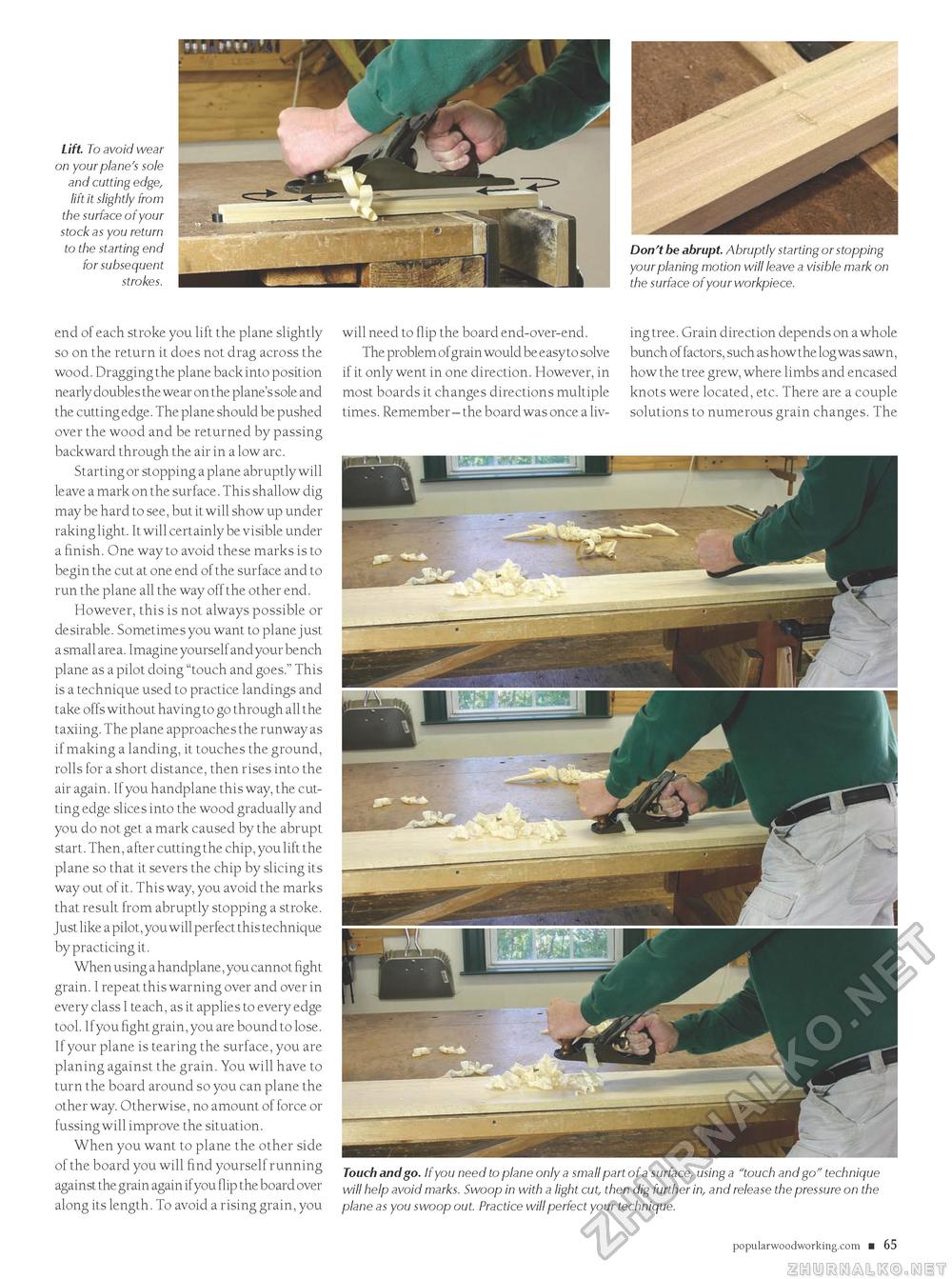Popular Woodworking 2008-04 № 168, страница 75
Lift. To avoid wear on your plane's sole and cutting edge, lift it slightly from the surface of your stock as you return to the starting end for subsequent strokes. end of each stroke you lift the plane slightly so on the return it does not drag across the wood. Dragging the plane back into position nearly doubles the wear on the plane's sole and the cutting edge. The plane should be pushed over the wood and be returned by passing backward through the air in a low arc. Starting or stopping a plane abruptly will leave a mark on the surface. This shallow dig may be hard to see, but it will show up under raking light. It will certainly be visible under a finish. One way to avoid these marks is to begin the cut at one end of the surface and to run the plane all the way off the other end. However, this is not always possible or desirable. Sometimes you want to plane just a small area. Imagine yourself and your bench plane as a pilot doing "touch and goes." This is a technique used to practice landings and take offs without having to go through all the taxiing. The plane approaches the runway as if making a landing, it touches the ground, rolls for a short distance, then rises into the air again. If you handplane this way, the cutting edge slices into the wood gradually and you do not get a mark caused by the abrupt start. Then, after cutting the chip, you lift the plane so that it severs the chip by slicing its way out of it. This way, you avoid the marks that result from abruptly stopping a stroke. Just like a pilot, you will perfect this technique by practicing it. When using a handplane, you cannot fight grain. I repeat this warning over and over in every class I teach, as it applies to every edge tool. If you fight grain, you are bound to lose. If your plane is tearing the surface, you are planing against the grain. You will have to turn the board around so you can plane the other way. Otherwise, no amount of force or fussing will improve the situation. When you want to plane the other side of the board you will find yourself running against the grain again if you flip the board over along its length. To avoid a rising grain, you will need to flip the board end-over-end. The problem of grain would be easy to solve if it only went in one direction. However, in most boards it changes directions multiple times. Remember - the board was once a liv ing tree. Grain direction depends on a whole bunch of factors, such as how the log was sawn, how the tree grew, where limbs and encased knots were located, etc. There are a couple solutions to numerous grain changes. The Touch and go. If you need to plane only a small part of a surface, using a "touch and go" technique will help avoid marks. Swoop in with a light cut, then dig further in, and release the pressure on the plane as you swoop out. Practice will perfect your technique. popularwoodworking.com ■ 65 CIRCLE #100 ON FREE INFORMATION CARD. |








